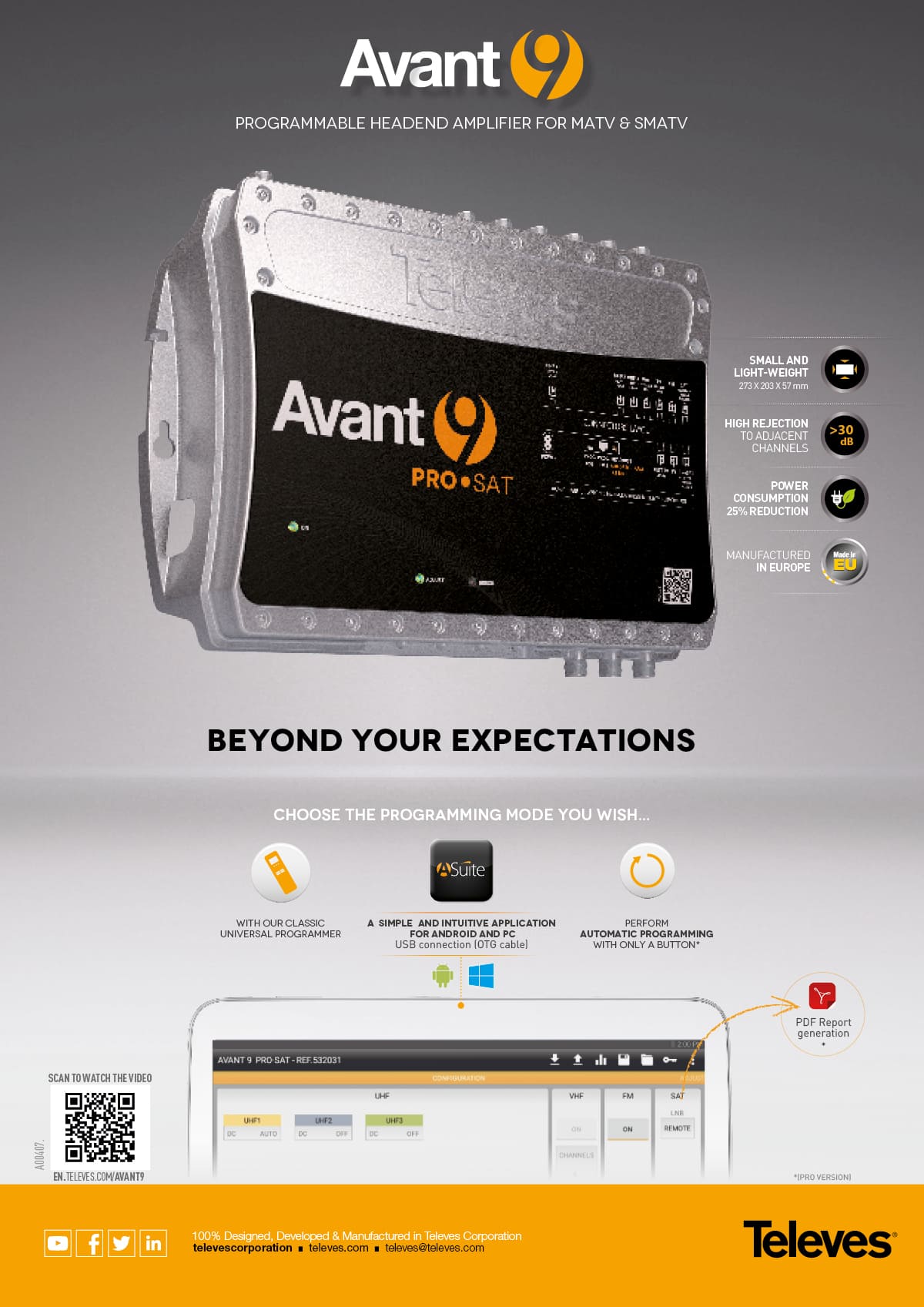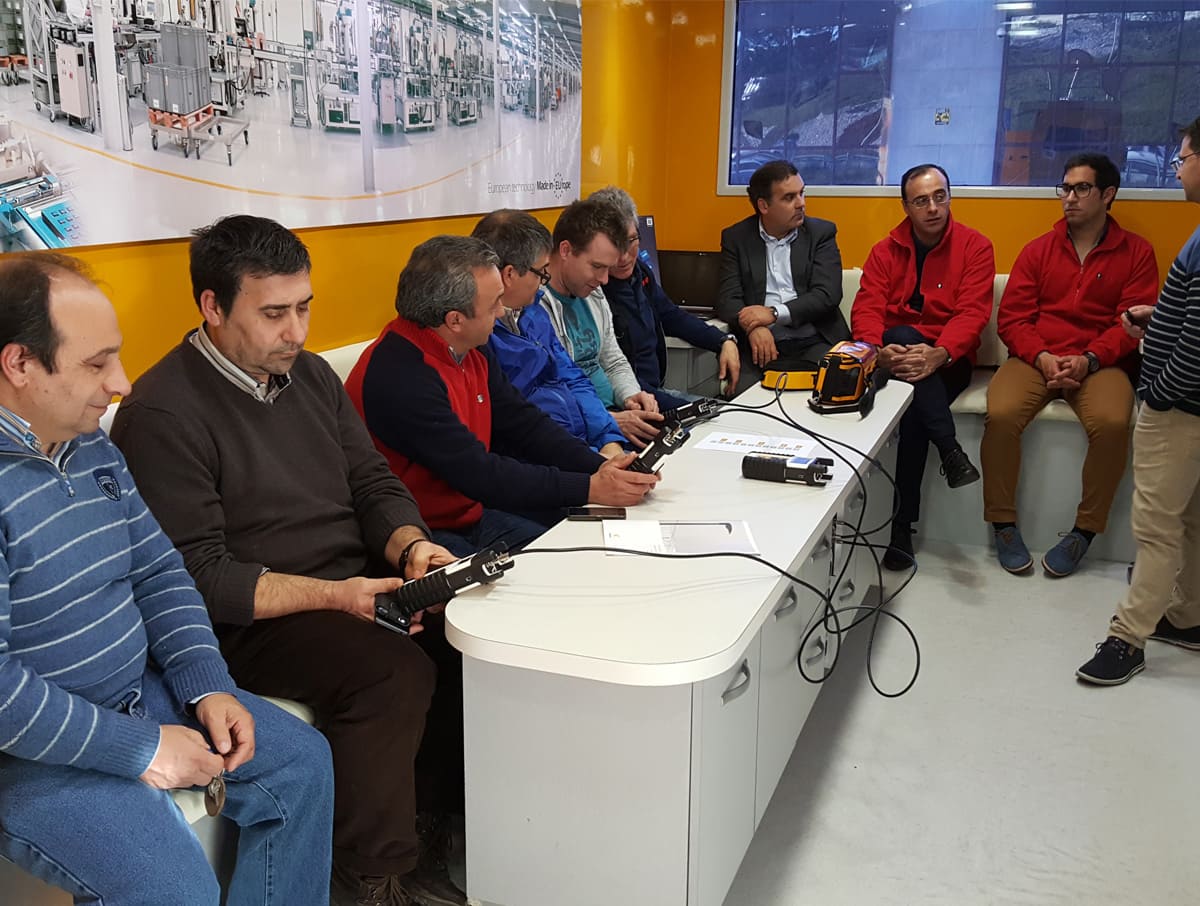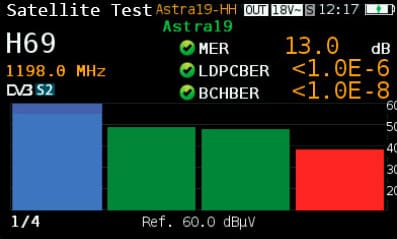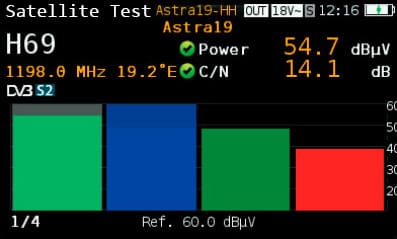Dokumentation
Komplett och uppdaterad service- och produktdokumentation tillgänglig för visning och nedladdning. Välj en kategori för att inleda din sökning.
InfoTeleves 40 (February 2017)
- General Information: Communication infrastructures: a costumer-centric perspective
- Televes in the world: H30FLEX: Portugal Tour
- Always up-to-date: Version 1.13 for H30FLEX
- Your pictures: 50 years of service
- FAQs: How to register my H30FLEX?
- Technological trens: The growing deployment of OTT on multiservice networks
- Training: H30FLEX Satellite Test Option
- Ideas: Save time with ASuite
- Facilities: Hotel Pansionat Yuzhny in Sochi (Russia)
- Announcement: Avant 9
General Information
Communication infrastructures: a costumer-centric perspective

Becoming a leading company in a given industry is a major challenge for any business, but holding the leading position over time represents an even bigger challenge. To do so, you need to follow the market trends closely and develop the flexibility required to adapt to market changes. The creation of the Communication infrastructures business unit rises up to that challenge. Televés is thus adapting its corporate structure to technology evolution, in parallel with the needs and requirements of its clients.
One of the unit's main goals consists in high-capacity high-speed networks, which both corporate and residential customers are asking for. An example of their quick development are new-generation networks (FTTH and HFC), which have already outnumbered copper-based ADSL lines in Spain. Special attention should be given to the hospitality industry niche, true beneficiaries of the turnkey integration of television and data services inside their buildings and properties.
Its goal is to help local operators put their competitive advantage into use: flexibility, personalization and customized services.
The Communication infrastructures unit will globally and efficiently manage the different solutions offered by Televés corporation for each market: TV, RF Overlay, FibreData, VOIP, IPTV, CoaxData, etc., by developing a complete catalogue of flexible solutions for multiservice networks, capable of adapting to the specific needs of each client. Its goal is to help local operators put their competitive advantage into use: flexibility, personalization and customized services.
The Televés brand has to be at the top of a business area in full swing and with great prospects for growth around the world. Innovation, quality and customer service will be the distinctive brand values to put into use, also in this filed.
Televes in the world
H30FLEX: Portugal Tour
(Portugal, January 9th to 27th)From Bragança up north to Faro far south, the H30FLEX Tour covered continental Portugal from top to bottom, visiting 15 cities. The tour lasted the whole month of January and brought in many telecommunications and electrical contractors, who showed up at the mobile unit of Televés eager for first-hand knowledge and experience about the new meter functionalities, as well as other products like the new DAT BOSS antenna with TForce technology or the luminaire smart grids from Gamelsa, a subsidiary of Televés corporation.
The H30FLEX Tour was assisted by the network of distributors in Portugal and was broadcasted live via the Facebook channel of the Portuguese subsidiary.
Always up-to-date
Version 1.13 for H30FLEX
Shortly after H30FLEX launch, a new firmware version is released: 1.13.
Among the implemented upgrades, the feature allowing to simultaneously view a satellite's orbital position and the parameter “Network Name” is worth highlighting.
The following upgrades were also implemented:
- Satellite power measurements were improved.
- Satellite spectrum representation was improved.
- Spectrum representation speed was increased.
- Satellite full span was extended to 1.25 GHz
- Function "Point antenna" on the spectrum screen.
- Acoustic warnings on error messages.
- Analogue terrestrial TV standard selection on the configuration screen.
- Representation of Number of carriers, Guard interval an Cell ID in echoes.
- Improvements in DVBT/DVBT2 connection with frequency offset.
- New channel plans added (CCIR AUS,CCIR NZ, FOXTEL, ExpAM, Optus, Amos, Eutel3, Eutel36, ...)
This update is available in the H30FLEX download section of the website: h30flex.televes.com
Your pictures
50 years of service

In these times, when retirement is as desired as uncertain, and after 50 years, the Belgian image antenna keeps working with the same enthusiasm as it did back when it used to contribute to the reception of black and white images. During its lengthy working life it had to update its function and where it used to receive a simple analogue spectrum, now it deals with complicated modulations full of bits and data.
The truth is this antenna looks younger than ever.
FAQs
How to register my H30FLEX?
Registering an H30FLEX within its first 30 days involves the free activation of two measurement functionsThe expert says
The H30FLEX meter registration process is quite simple; you just need to follow the instructions described in the image.
The QR code and URL shown on the screen are linked to the meter's serial number; the PIN obtained is thus exclusive to the meter being registered.
If the registration is carried out within 30 days after the first start, the meter will include two free extended options: ref.593235 that provides a wider level measuring range, and ref.593234 that activates the dCSS function (digital channel stacking switch).

Press OK and start registration.
OPTION A: Scan the QR code with your smartphone or tablet
OPTION B: Write the URL on your browser

Register your H30FLEX on our website. Once the process completed you will receive a PIN via e-mail.
Enter the PIN into your H30FLEX
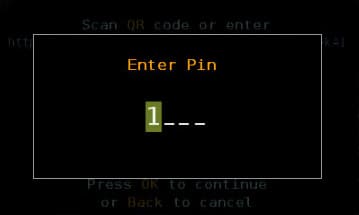
REGISTRATION COMPLETE
Enjoy your H30FLEX!
Technological trens
The growing deployment of OTT on multiservice networks
OTT is becoming the flagship service for the integration of multiservice networks over communication infrastructures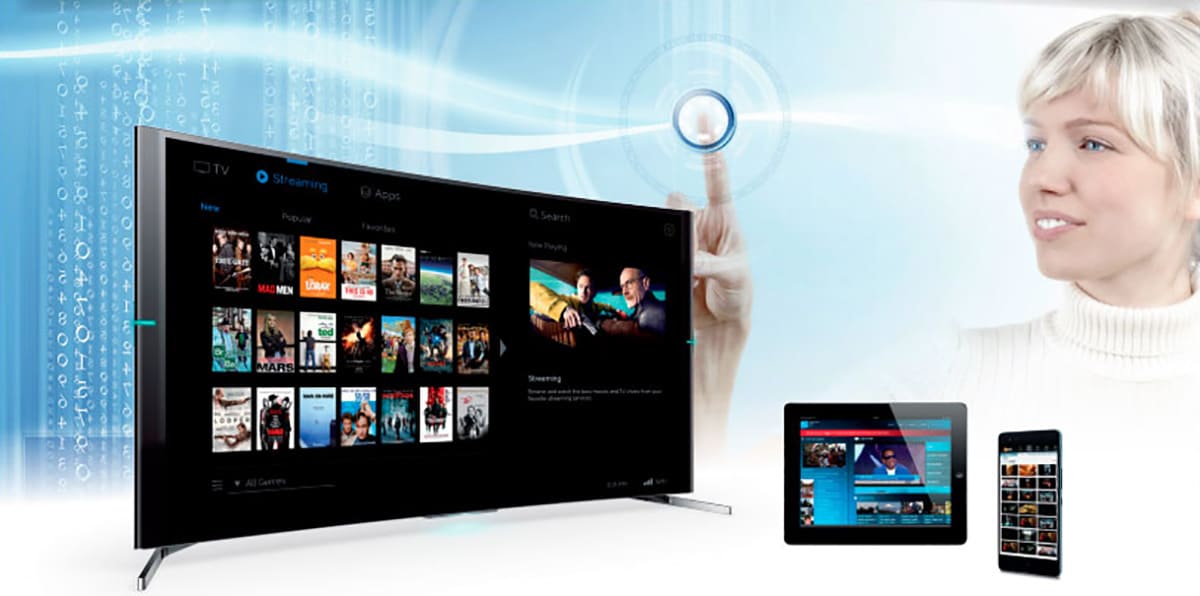
A growing number of operators are launching their OTT deployments, driving customers' needs for more active broadband connections and higher capacity, both for downloading and video streaming.
But what is OTT actually?
OTT is a set of different technologies that make use of the Internet and its standard protocols to provide the users with multimedia contents, either live video or video on demand.
As is the case with IPTV, OTT uses the IP protocol for content distribution. However, unlike IPTV, OTT uses an unmanaged network like the Internet as the distribution network. It cannot use MPEG-TS, since this encapsulation requires stable network conditions without packet loss. Video IP streaming is used instead.
In an unmanaged network like the Internet, bandwidth changes, conditions are unstable and the quality of service is not guaranteed, which involves working under “best effort” conditions, or best attempt.
Youtube, Netflix, Amazon LoveFilm, Hulu, Sky Go, BBC iPlayer or Yomvi are some examples of OTT services. These contents may be free (such as Youtube content) or encrypted, and subject to a content-based or access fee subscription (like Netflix).
To receive OTT content, you can use either a specific receiver (sometimes associated with a different broadcasting technology, such as satellite or cable) or a television set, tablet or smartphone with the appropriate viewing app.
As for the bit rate required to guarantee a given Quality of Service, it depends on the type of service to be delivered: SDTV, HDTV or UHDTV. According to Netflix, 3 Mbps is the recommended bit rate for SD streaming, while HD streaming requires at least 5 Mbps and 4K, 25 Mbps. However, those rates are slightly lower when new codecs like HEVC (MPEG5) are introduced: they reduce the bit rate down to 2.5 Mbps for HD and to 15Mbps for 4K.
Despite the fact that it is usually difficult for an ISP (Internet Service Provider) to guarantee those rates, some buffering techniques (e.g. storage) can be used to view the contents, obviously not in real time. CDN (Content Delivery Networks) are used to optimize distribution; they allow for higher efficiency in terms of content capillarisation in an unmanaged network like the Internet.
OTT is yet another example of a value-added service to be integrated into a multiservice network infrastructure that incorporates television and data in a flexible way. Televés will keep working on providing the integrator and maintenance provider of those communication infrastructures with networks that are capable of managing growing data streams to enable services such as OTT, and other services related to the Internet of Things, Smart Cities, Digital home, Remote care and prevention, and Ultra High Definition OTT, among others.
Training
H30FLEX Satellite Test Option
How to find out whether my parabolic antenna is correctly oriented with the help of my H30FLEX meterWe first select the channel plan of the satellite the parabolic antenna is pointing to. To do this, you need to go to the main menu with the HOME key at the bottom, to the Configuration option, by means of the OK or ► keys, and then select the desired Plan Sat. There are always a couple of transponders Inside each plan that any installer knows by heart (or so they claim); these are the ones we are going to use in order to check the correct antenna orientation.
Choosing the correct Band in the Configuration section - namely SAT - is essential; otherwise an error message will pop up indicating the function is unavailable.
We enter the function Test Satellite (fifth option on the main menu after we press the HOME key) by means of the OK or ► keys, as usual, and then we press SETUP. A menu pops up showing several options (power supply, DiSEqC, SCR, Ref. Level and Channels), and we select the Channels option with the OK key.
We enter the desired number of transponders (between 1 and 4) at the top, where # Channels is displayed. Once the number of transponders (1, 2, 3 or 4) is selected, we choose from the drop-down lists the transponders we wish to take the measurements on. Setting the power supply of the LNB to automatic mode is recommended, in order to allow transponders with different polarizations to be included in this option. In case all transponders have the same polarization, it could be set manually but it is still recommended to do it automatically in order to speed up the process.

We exit SETUP with BACK and return to the main screen Test Satellite.
The screen shows the bars for each transponder. By means of the ◄ and ►, keys, we can select the different transponders that have been measured and check their respective PWR and C/N. The white shading on a bar indicates the selection of the transponder which measurements are shown on the right; besides this shadowing, the bottom left side will show the sequence number of the selected transponder. In our example, the first transponder out of the four selected transponders (1/4).
Furthermore, as for the System scan option, a blue shading will indicate on a cyclical basis which transponder is being decoded at that time. The reference level used will be displayed at the center of the bottom area. The meter comes in automatic mode by default, but this can be modified in the SETUP menu mentioned above; allowed values range between 60 and 110dBµV, in steps of 10. Once the entered transponders scanned and linked, the MER, LDPCBER and BCHBER for DVB-S2 and the MER, CBER and VBER for DVB-S will be displayed instead of PWR and C/N.
By pressing the OK key we can go back and display PWR and C/N. Distinction between DVB-S and DVB-S2 is done in an automatic and fully transparent way for the user; it is displayed at the top left side, under the frequency of the selected transponder (either real frequency or intermediate frequency, based on the option selected in the Configuration section). The bars for the selected transponders will be coloured red, yellow or green, the same colours used for quality profiles. The top central area displays the name of the satellite that corresponds to the orbital position detected.
If the plan remains unchanged, each time the option Test Satellite is selected the same transponders will be displayed in order to speed up verification for any installation.
Ideas
Save time with ASuite
ASuite is the application used for the configuration of the new AVANT9; it is available for both Android and Windows. The multiband amplifier configuration can be stored in a tablet, smartphone or computer and later downloaded into the previously installed multiband amplifier or into the AVANT9 prior to installation.
Whichever method is used, the procedure is so quick and automatic that the headend adjustment becomes a simple task performed in no time.
Application available on: asuite.televes.com

Facilities
Hotel Pansionat Yuzhny in Sochi (Russia)

Five-star hotel Pansionat Yuzhny is located in the Russian city of Sochi, on the shore of the Black Sea.
With 300 hundred rooms and covering 53,000m2, this hotel has an integrated TVSAT and TDT installation with an IPTV system from Arantia.
The equipment consists of three HE-21 headends, an encoder that generates four own-production services, and a VOD server. The RF signal coming from two satellite dishes and a DATHDBoss was fed to the equipment through a star distribution using multiswitches.
The installer is Insystems, a subsidiary of the integrator Lanit Nord.



INSTALLER:

Announcement
Avant 9
